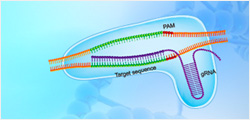| Species |
Human |
| Protein Construction |
IL-1R1 (Leu18-Thr332)_x000D_
Accession # NP_000868.1 |
His |
| N-term |
C-term |
|
| Purity |
> 95% as determined by BisTris PAGE
> 95% as determined by HPLC |
| Endotoxin Level |
Less than 1EU per μg by the LAL method. |
| Biological Activity |
Measured by its binding ability in a functional ELISA. Immobilized IL-1R1, His, Human at 5μg/ml (100μl/well) on the plate can bind Biotinylated Human IL1 Beta, His Tag. Test result was comparable to standard batch. |
| Expression System |
HEK293 |
| Theoretical Molecular Weight |
37 kDa |
| Apparent Molecular Weight |
Due to glycosylation, the protein migrates to 55-68 kDa based on Bis-Tris PAGE result. |
| Formulation |
Lyophilized from 0.22μm filtered solution in PBS (pH 7.4). |
| Reconstitution |
Centrifuge the tube before opening. Reconstituting to a concentration more than 100 μg/ml is recommended. Dissolve the lyophilized protein in distilled water. |
| Storage & Stability |
Upon receiving, the product remains stable up to 6 months at -20 °C or below. Upon reconstitution, the product should be stable for 3 months at -80 °C. Avoid repeated freeze-thaw cycles. |
| Target Background |
Interleukin 1 (IL-1) has long been known for its pleiotropic effects on inflammation that plays a complex, and sometimes contrasting, role in different stages of cancer development.IL-1R1 is the main receptor for both ligands and is expressed by various cell types, including innate and adaptive immune cell types, epithelial cells, endothelial cells, adipocytes, chondrocytes, fibroblasts, etc. IL-1 and IL-1R1 receptor interaction leads to a set of common signaling pathways, mainly the NF-kB and MAP kinase pathways, as a result of complex positive and negative regulations. |
| Synonyms |
IL-1R-1; IL-1RT1; IL-1R-alpha; CD121a; IL-1 RI; IL1R; IL1RI; IL-1RI; p80; D2S1473; IL1RA |
For research use only. Not intended for human or animal clinical trials, therapeutic or diagnostic use.




































